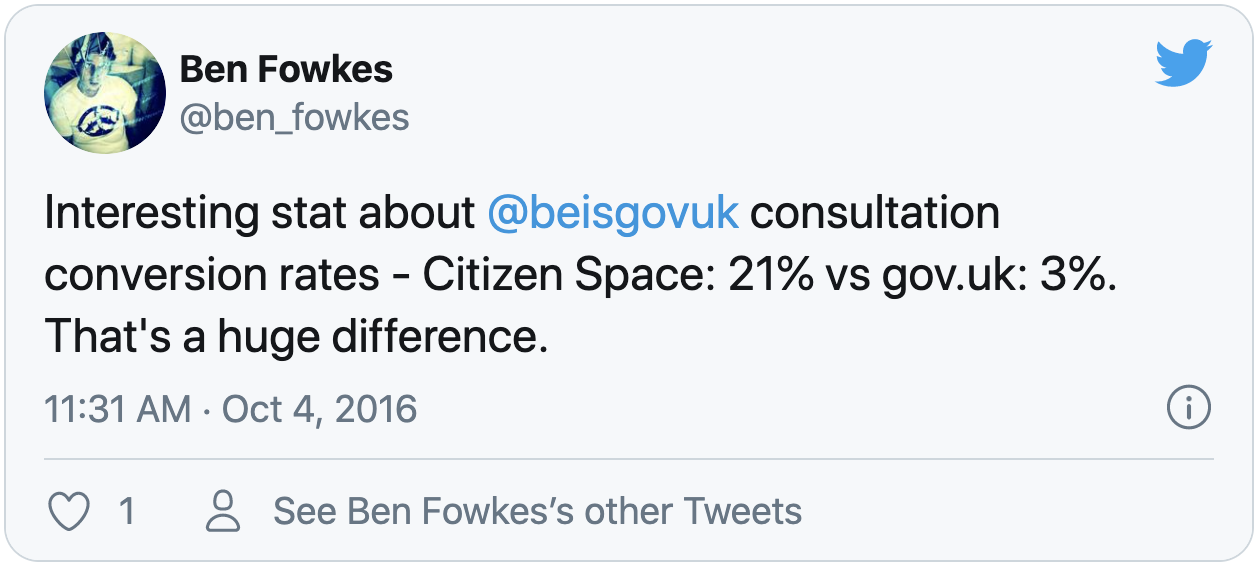We work with a lot of people in government who want as many citizens as possible to be involved with consultation. They don’t want to see empty rooms at consultation events where people are supposed to give their views and nor do we.
There’s a genuine commitment to increasing participation. As a result, a common question from civil servants about our products is ‘will this help us open up our consultation to a wider audience?’
The short answer is ‘yes’. The slightly longer (more interesting) answer is that we have a guiding principle for increasing accessibility and participation: that the best way to open up consultation is to make it as easy as possible for people to get involved. Our conviction is that removing friction from the process of participation will increase the range of people who are willing and able to get involved.
Keeping things simple
When the UK Department for Business, Energy and Industrial Strategy (BEIS) published their consultations on the gov.uk website and Citizen Space simultaneously, they found that the average completion rate was much higher when using Citizen Space – 21% compared to 3%.
In part, this was simply down to there being fewer steps in the end-to-end journey. Citizen Space lets you manage the entire consultation process in one place, from listings to survey to response publishing.
We do whatever we can to keep it easy to participate: people don’t have to register an account or login to take part, for instance. And we try to maintain a clean, simple interface design to help people remain focused on the matters at hand, rather than getting stuck on convoluted or overly-technical processes. We’ve consistently seen that keeping things simple delivers better results.
User-centred design
Visual design is another important factor which has been considered for every aspect of Citizen Space. From spacing, to font size, to line lengths, everything is centred around the user experience. In Reading Borough Council’s experience, well-presented content was shown to increase participation. By involving marketers and content-writers in the building of consultations, they made sure surveys were easy to understand and easy to parse – and response numbers improved as a result. If people can quickly and easily understand what is being asked of them, they are far more likely to participate.
Accessible to everyone
Accessibility has been meticulously considered in the building of Citizen Space which makes it available for anyone to engage with, including those who may need to use screen readers, have sight issues or other disabilities that might prevent them from taking part in consultations in person. Responsive design also means that consultations can be viewed and responded to on all devices, meaning that those who perhaps don’t have access to a laptop or desktop computer can still get involved using their tablet or mobile phone.
All of these factors combined make consultation easier for participants – lowering the barriers to entry and reducing the friction in the process – leading to increased involvement.
The aim is simple: we want to help people who are working to get more citizens involved in government and consultation. If that sounds like you, drop us a line to find out how we can help you.

